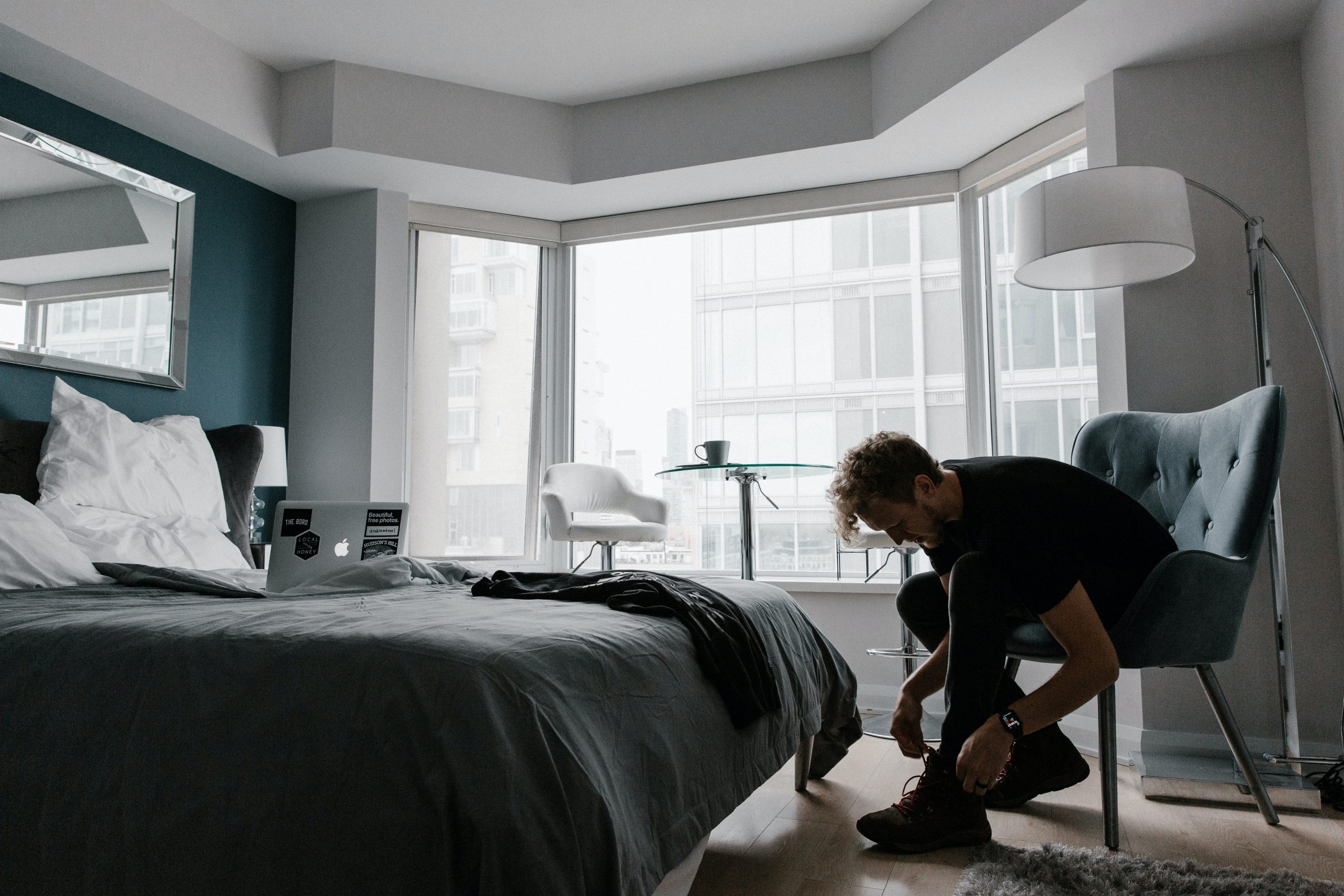Eye Workouts In Midlife To Practice Daily
10.07.2021

Cleaning The Windows To The Soul:
“The face is a picture of the mind with the eyes as its interpreter.”
Marcus Tullius Cicero
Eye workouts are rarely mentioned in the media that we consume because we’re too busy worrying about our waistlines and varicose veins. Our eye health is being taken for granted or at worse, being ignored. And most of us deny that we have vision problems at first. Maybe, in our heads, that means we hold back the years. “I can see fine! I’m still in my prime!”
But *click* – back to reality. Our visual problems will get far worse over time if we keep pretending they’re not getting weaker.
Think back to the last time you were on a date with your significant other. You took an evening to yourselves and went to your favorite Italian joint, complete with vintage wine and mood lighting.
You’re wearing your finest “maybe I’m getting laid tonight” clothes, pouncing on a chance to be proactively sexy during midlife. The waiter leads you to your seats with a smile and hands you and your partner a menu. And that’s where the sexy vibes come grinding to a halt.
The reading glasses come out of your pocket. You spend three minutes moving the menu back and forth, trying to focus on what’s in the tortellini. The glasses come off and on and off and on. The excitement of the evening is becoming buried under midlife’s effects on your body.
You’ve just been faced with a blunt reminder that you’re no longer a spring chicken. At the moment, it’s just your evening’s romantic allure at stake. But your eyesight may be having more of an impact on your life than you realize.
If you struggle with your eyesight but do nothing about it for the sake of vanity, you’re creating problems for yourself. This cycle can lead to frustration, anxiety, and gloom.
But don’t panic! We’ve done the research, so you don’t have to. And we found some exercises for eye workouts that can help your eyes feel better.
Why might eye workouts help midlifers?
Eye yoga can help you soothe your eyes daily.
You can’t ignore poor and eroding vision for too long without serious consequences. Driving at night, for example, can be scary and potentially dangerous for people who are noticing that their vision isn’t what it used to be.
Research suggests that just over 15 percent of midlifers experience mild visual impairment – which doesn’t feel like a huge number until you register that the same study also found that 88 percent of midlifers use glasses.
(And that’s just the folks in midlife who admit they have vision problems. There are likely many more who need it but won’t suck up their pride and buy reading glasses.)
It’s not just dimly lit, high-end restaurants that bring our developing eye problems into total clarity (somewhat ironically). As of 2016, the last time U.S. stats on the topic were reported, 60 percent of people used a screen for over 5 hours a day.
Even if you don’t usually reach 5 hours of screen use during your workday alone, we’d put good money on you spending at least an hour messing about on your WhatsApp group with friends and at least an hour watching TV during your average day.
Screentime adds up
And the time we spend in front of screens can contribute to computer vision syndrome, a form of eye strain that our overexposure to digital media can cause.
And while that 2016 report focused on eye strain, the numbers don’t quite account for the daily struggle of f*cking about with your phone brightness and font size until it doesn’t hurt to look at anymore.
Our relationship with screen time isn’t becoming any less codependent. A 2021 study found that a considerable boost in digital screen time over the pandemic may have hiked the global risk of shortsightedness problems.
Moderate-to-severe visual impairment has proven links with depression, and understandably so. While mild eye strain is unlikely to lead directly to mental health struggles, as our vision gets weaker, so does our connection to the world and our ability to navigate it.
We found some exercises for eye workouts that might help you relax your eyes, soothe them, and help you become more mindful of how they feel – but there’s no scientific proof that these are going to improve your prescription or reduce your need for reading glasses as time moves forward.
Like it or not, your eyes are going to get worse as a midlifer, especially when you spend as much time in front of screens as you do. You might as well do what you can to make them feel comfortable. Like it or not, eye workouts are essential to your body, mind and soul caring routine.
Eye workouts that can help soothe your vision
No, eye workouts are not a cure-all for vision loss. But eye exercises can help you find relief during the highly eye-intensive lifestyle 21st-century humans have adopted.
Team Vippi has developed a four-step eye workout you can repeat once or twice every hour to keep your eyes comfortable.
You can repeat these eye workouts “reps” as many times as is comfortable.
1. Rolling your eyes
In eye yoga (yes, that is a thing), eye-rolling is known as “rotational viewing.” In theory, this can help relieve tension in the muscles that help you direct your eyes toward objects in your environment. Eye-rolling can help you feel less sore behind and around your eyes.
These eye workouts steps are pretty simple:
- Sit upright and breathe in.
- Gently look upward, being sure to focus on whatever you see.
- Without moving your head, look to your right. Focus on what you see there.
- Look all the way downward. Don’t forget to focus.
- Look to your left, focusing again.
- When you return to looking at the ceiling, return your eyes to look straight ahead in their central position, and breathe deeply. Well done! You’ve completed one motion.
- Repeat this clockwise motion as many times as feels comfortable.
- Now, reverse the direction to counterclockwise, and repeat the same amount of times.
If you want to engage in some more hardcore eye-rolling, though, read about the latest cryptocurrency to hit the market. (Ugh.)
2. Switch your focus
Focus-shifting can help you keep your eye muscles flexible while supporting your ability to focus your vision.
- Move your left hand forward as far as it will go with a thumbs-up position.
- Sit upright, looking straight ahead. Focus on your thumb with both eyes.
- Slowly move your left arm to the right as far as it can go, keeping your focus on your thumb. Make sure your head, neck, and chin stay still.
- Move your left arm back to the left as far as it can go, maintaining focus on the thumb.
Another technique involves holding a finger a few inches in front of your face. It can be best to try this outside, with something far away to focus on:
- Focus on the finger.
- Slowly move your finger away from your face, maintaining focus.
- Once your arm is at full extension, focus on something way in the distance beyond your finger.
- Maintain this focus on the distant object, then return your focus to the finger.
- Move your finger back to its original position a few inches from your face.
3. Blinking and yawning

Much of the time, our eyes feel uncomfortable because they’re not lubricated enough. To ensure we keep up lubrication (and without needing to use eye drops or artificial tears), we can simply blink multiple times and force a yawn.
This can help trigger tear production in your eyes and keep them nicely lubed up for action. Your tears protect your eyes from infection and keep foreign matter like dust away from the surface of the eye.
4. Figure Eight
This can help you engage the full motion of your eyes. Think of it as a stretch for your eyeballs.
- Pick a spot on the ground roughly 10 feet away. You can put an object or marker down if it helps you hold focus.
- In a clockwise motion, trace an imaginary figure eight around the imaginary spot with your eyes – it should be the center of your Figure Eight. Don’t worry if the movements feel slow or jerky.
- Once you’ve made a few motions in a clockwise direction, move your eyes counterclockwise.
Eye R&R: When it’s not all about exercise
Sometimes, keeping your eyes fresh isn’t so much about working them out as giving them a little bit of a rest.
We use our eyes more than ever for focused work. If you ran all day, every day, your legs would start to feel like lead – you’d practically be dragging them along behind you.
This is what we do to our eyes every time we stare at a screen for 8 hours. So after the Eye Workout, why not treat yourselves to some eye massages and relief for a bit of much-needed R&R? Step right this way – we’ll show you how to give your eyes the break they deserve.
The 20:20:20 method
Giving your eyes a rest might not be enough on its own – sometimes, you have to find a system for enforcing relaxation. The 20:20:20 rule is super handy for doing so:
Every 20 minutes, look at an object 20 feet away for 20 seconds.
This may help you dip away from the screen often enough to keep your eyes snug and relaxed. This allows you to breathe, reset, and then jump back into whatever you were doing with sharper vision and a reduced feeling of strain and pressure.
Use the warmth of your palm
Palming might sound like a sex move, but it’s great for giving your eyes some much-needed respite. This will radiate natural warmth to the area around your eyes, blocking out the light and giving you a moment for internal reflection. It completely removes pressure from your eyes.

- Rub your hands together to warm them up.
- Gently cup them over your eyes (without actually touching your eyes).
- Make sure your fingers are fully closed and not letting light through. Your eyes need to have complete relief from having to focus on anything. That includes adjusting to the light.
Make palming the last step in any eye workout.
A warm compress
This is a step up from palming if you want to take your optical pampering to the next level. You know when you have a pounding headache, and laying down with a wet hand towel helps drain the tension from your skull? This will give you the same sensations, but within your tired, overworked eyes.
- Soak a hand towel in lukewarm water, then wring it out.
- Lay on your back.
- Cover your eyes with the towel.
- Think about literally anything but the reason you’ve been staring at a screen.
General tips on how to keep your eyes healthy
The good news: Exercises can help your eyes feel better on a day-to-day basis. The bad news is that they’re not going to keep degenerative eye problems at bay.
But there are simple lifestyle adaptations you can make that can help keep your eyes in tip-top shape. You need to catch any optical issues before they become too severe.
Lifestyle tips
These preventive measures can help you reduce your risk for serious eye problems:
- See an eye doctor once a year for a comprehensive eye exam. This applies even if your vision isn’t getting noticeably worse. Not every severe eye problem shows symptoms at first.
- If you’ve got any health problems that might increase the risk of vision problems, like diabetes, see your doc every 6–12 months.
- Be aware of any cataracts, glaucoma, or age-related macular degeneration in your family tree. While day-to-day eye strain isn’t a direct route to serious eye problems, it’s worth knowing whether you have a genetic risk for these conditions.
- If you’re out in the sun, throw on a pair of UV-protective shades. UV light can be damaging to your eyes. Plus, you’ll look like Maverick or Sarah Connor.
- Put vanity to one side and wear your f*cking glasses – or go for prescription contact lenses if you really can’t stomach being a giant nerd (grow up, they’re cool now). There are plenty of manufacturers and designers making modern, attractive frames, and there’s an option for every face shape and eye color. You’ve no reason to jeopardize your eyesight for fear of “looking like a dweeb.”
- Make sure you’re holding your phone screen as far away from your face as possible and aren’t sitting with your nose pressing up against your computer monitor while you work. Also, it’s best to adjust the brightness of any screen to a “Goldilocks” level – bright enough that you can read what’s on the screen without having to strain, not so bright that it’s like staring directly at the sun.
Food for sight

As with literally anything else in your body, not getting enough of certain nutrients in your diet can dramatically affect your eye health, especially as you move through midlife.
Essential nutrients to stock up on are:
- Vitamins A, C and E
- Zinc
- Copper
- Omega-3 fatty acids
- Lutein
- Zeaxanthin
You’re not about to stroll into your nearest Trader Joe’s and ask for “a bag of zeaxanthin, please.” But you can make sure you include foods in your meals that help you preserve eye health.
These include:
- Fish, including tuna, salmon, and herring
- Legumes and nuts, like walnuts, cashews, and lentils
- Seeds, like chia and flax seeds
- Citrus fruits, like lemons and oranges
- Leafy green veg, like spinach, collard greens, and kale
- Carrots (your nana wasn’t far wrong about them “helping you see in the dark.”)
- Sweet potatoes
- Beef
- Eggs
- Water (because your eyes need hydration, too)
The roundup

There’s not much turning back the hands of time when it comes to your eyesight.
These exercises and enforced rests can help you reclaim some optical energy during your day-to-day work and screen demands.
By combining this workout with regular visits to your eye doctor and a diet that includes the vital nutrients your eyes crave, you can help your eyes feel great and reduce your risk for vision-threatening degenerative conditions.
Now, stop reading this article, give your eyes a break, and practice what you have just read.
Article resources
Are you at risk for glaucoma? (n.d.). https://www.glaucoma.org/glaucoma/are-you-at-risk-for-glaucoma.php
Brennan, D. (2020). Best exercises for eye strain. https://www.webmd.com/eye-health/best-exercises-eye-strain
Cataracts. (2019). Genetics of age-related macular degeneration (AMD). https://www.nei.nih.gov/learn-about-eye-health/eye-conditions-and-diseases/cataracts#section-id-5591
Dawes, P. (2014). Vision impairment and dual sensory problems in middle age. https://www.ncbi.nlm.nih.gov/pmc/articles/PMC4273649/
DeAngelis, M. M. (2017). https://pubmed.ncbi.nlm.nih.gov/28854576/
Dry eye. (n.d.). https://www.mayoclinic.org/diseases-conditions/dry-eyes/symptoms-causes/syc-20371863
Eyes overexposed: The digital device dilemma. (2016). https://visionimpactinstitute.org/wp-content/uploads/2016/03/2016EyeStrain_Report_WEB.pdf
Meixner, M. (2018). The 9 most important vitamins for eye health. https://www.healthline.com/nutrition/eye-vitamins
O’Keefe Osborne, C. (2018). Eye exercises: How-to, efficacy, eye health, and more. https://www.healthline.com/health/eye-health/eye-exercises
Villines, Z. (2018). Top 10 foods for healthy eyes. https://www.medicalnewstoday.com/articles/321226
Vimont, C. (2017). Vision training not proven to make vision sharper. https://www.aao.org/eye-health/tips-prevention/vision-training-not-proven-to-make-vision-sharper
Watson, K. (2020). Eye yoga. https://www.healthline.com/health/eye-health/eye-yoga
Wong, C. W., et al. (2021). Digital screen time during the COVID-19 pandemic: Risk for a further myopia boom? https://www.ncbi.nlm.nih.gov/pmc/articles/PMC7390728/


















